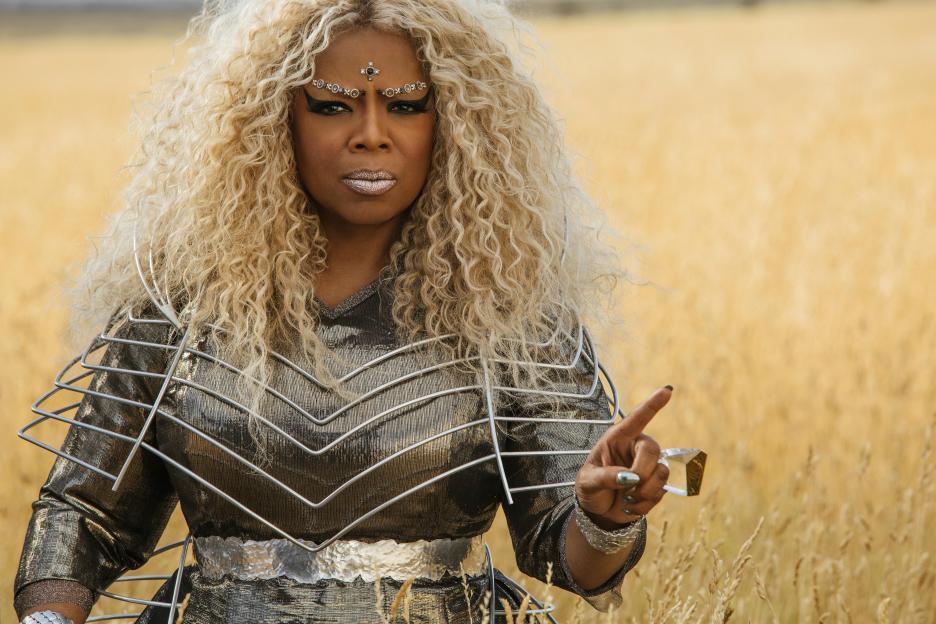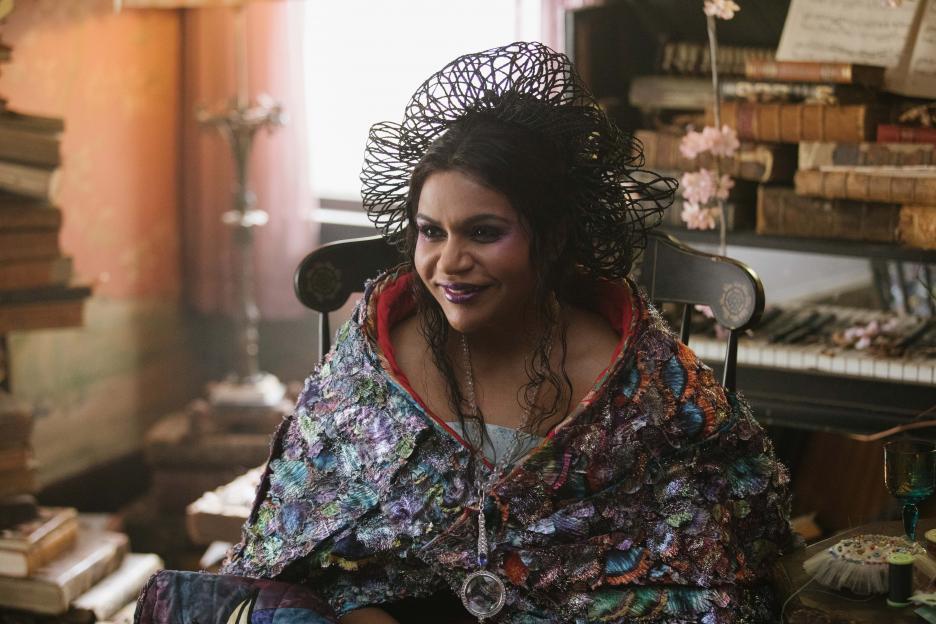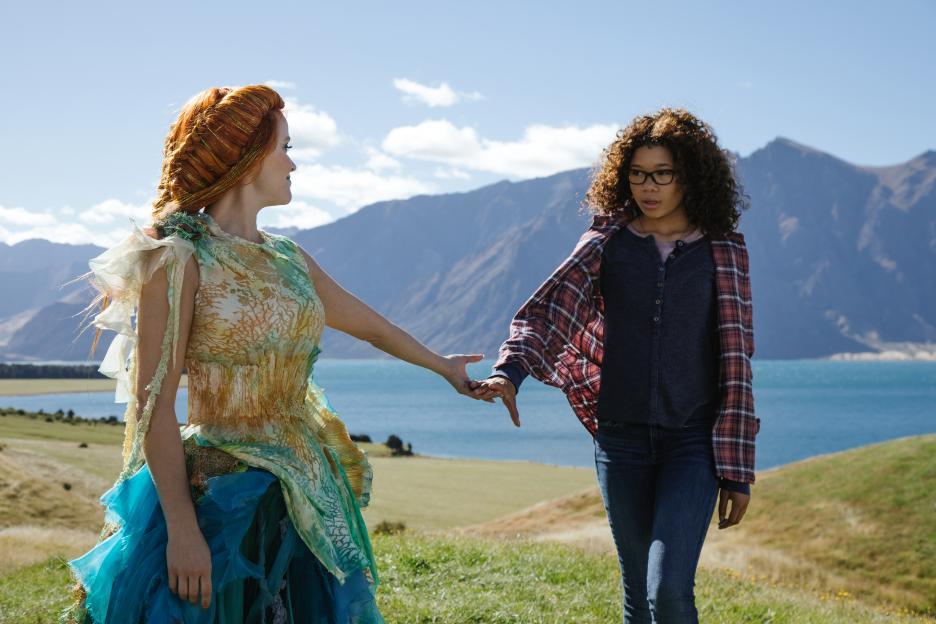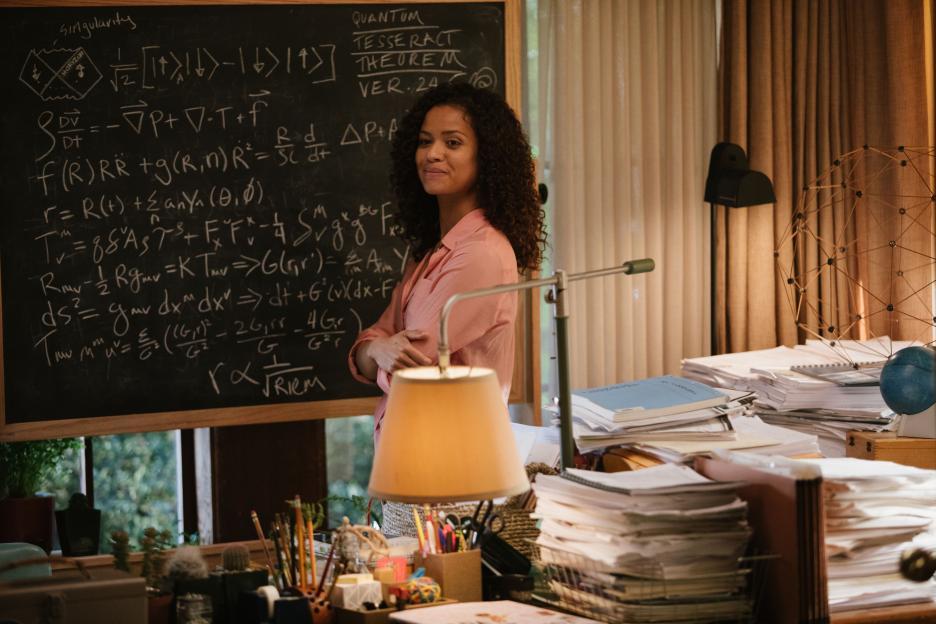
Photo credit: Disney
A Wrinkle In Time is a feel-good visual feast, full of positivity, mystery and love. Throw Oprah into the mix, and I left the movie theater inspired to become my best self. The movie is as much of a pep talk to children as it is a lesson on how to embrace ones flaws. But it’s also a love letter to the unknown, the supernatural, or the mystery of the universe – whatever you consider to be your spiritual cup of tea. It is a film about family and about hope.
Based on the 1962 book by Madeline L’Engle, with a screenplay by Jennifer Lee and Jeff Stockwell, director Ava DuVernay is the first female African-American director to be given a budget of over $100 million. What stands out so strikingly in the film – more than Oprah’s glittery lips, Reese Witherspoon’s ginger fish braids or Mindy Kaling’s basket-inspired headdress – is the diversity of the cast.
The Murray family is a true American melting pot: Mrs. Murray is played by Gugu Mbatha-Raw, an actress of black South African and white British descent; Mr. Murray is played by Chris Pine, who’s Caucasian. Their daughter Meg is played by African-American actress Storm Reid and her adopted brother, Charles Wallace, is played Deric McCabe, who is of Filipino descent.
As screenwriters, we can learn a valuable lesson from DuVernay, and ultimately Disney’s decision to go with a multi-ethnic cast. Though the book A Wrinkle in Time specifies that Mrs. Murray is white, that doesn’t mean Mr. Murray can’t be of a different race or that their children can’t be adopted, opening up the possibility of being a different race.
There are many ideas about what “diversity” is in film and television. Conversations about age, gender, race, sexual orientation and physical disabilities are all taking place in Hollywood with many voices urging the entertainment community to be more inclusive when writing projects or casting them.
Creative Artists Agency studied diversity in over 400 movies from 2014 to 2016 and found that diverse casts translated into more dollars at the box office. This makes sense because a more diverse audience will go see the film. And now that Black Panther is breaking records, studios will be looking for diversity.
Here are a few ways we can add diversity to the pages of our screenplays.

Mindy Kaling in A Wrinkle in Time. Photo credit: Disney
No. 1. Assign ethnicity to your characters
Most of us write our lead characters in the same gender/race that corresponds with ours. I do because it’s what I know. But other characters can certainly be from a wide range of ethnic backgrounds. Shows like The Alienist, Orange is the New Black and Westworld include a rainbow of characters and it organically adds dimension to the overall atmosphere of the story. Even a by-the-history-book period show like Victoria found a way to add African characters in the season two finale. It gave the British show a breath of fresh air. At the very least, help the casting director think out of the box and say a character is of “any ethnicity” in your character description.

Photo courtesy: Disney
No. 2. It’s not just a man’s world
Today, women make up nearly 47% of the labor force in America. That includes surgeons, computer hackers, aerospace engineers, construction workers, truck drivers, soldiers and professional athletes. Though men have dominated business and government throughout history, even a factory owner in the industrial revolution or a merchant in ancient Greece may get ill or injured and need their wife/sister/daughter to fill in. At the very least, convert job descriptions to gender-neutral language.

Photo courtesy: Disney
No. 3. Physically diverse characters create drama
I simply can’t imagine Game of Thrones without Tyrion Lannister, played by Peter Dinklage. Not only does having a dwarf in the powerful Lannister family create a tense power dynamic, it also reveals the nature of other characters by how they react to Tyrion. I also love Patrick Stewart as Professor X, the man in the high-tech wheelchair in the X-Men movies. Overall, the more challenges we give our characters, the more three-dimensional they become.

Photo courtesy: Disney
No. 4. Avoid only using English sounding names
Instead of naming a character Gladys, why not Guadalupe? Or instead of Jason, Jinjing? Obviously, not all stories have room for Latina or Asian characters, but most do. Also, script readers like seeing names other than Jake or Jennifer because it shows creativity.

Photo courtesy: Disney
No. 5 – Create a world that’s diverse
Game of Thrones is really the best example of a multiracial, physically diverse cast of characters but any sci-fi or fantasy project can be just as inclusive. Other genres can be diverse as well, and if you do a little research, you’ll find even the smallest town in Middle America may have Sudanese refugees like Salt Lake City, or a significant deaf community like the one on Martha’s Vineyard.
What are ways you are making your screenplay more inclusive or diverse? Let us know in the comments section below.




1 Reply to "5 Ways to Make Your Screenplay More Diverse and Inclusive"
hadji williams March 13, 2018 (5:44 pm)
Diversity is humanity. It creates richer characters with more range of views and perspectives—and that gives me, as a writer, more ammo to create drama and conflict that feels more authentic and urgent.
The problem most writers have isn’t what we don’t know, but an unwilling to do research about what we don’t know.
I research topics I write about to death. Do I research people of different backgrounds to make my characters feel realer? Not as much as I should.
When I watch movies I can tell when the writer/director simply expects the actor to carry the “ethnic piece” of their character’s arc; i can tell because there’s so little meat in the dialog or story for the actor to work with. That’s when the stereotypical performances and lazy references pop up.
just y two cents.